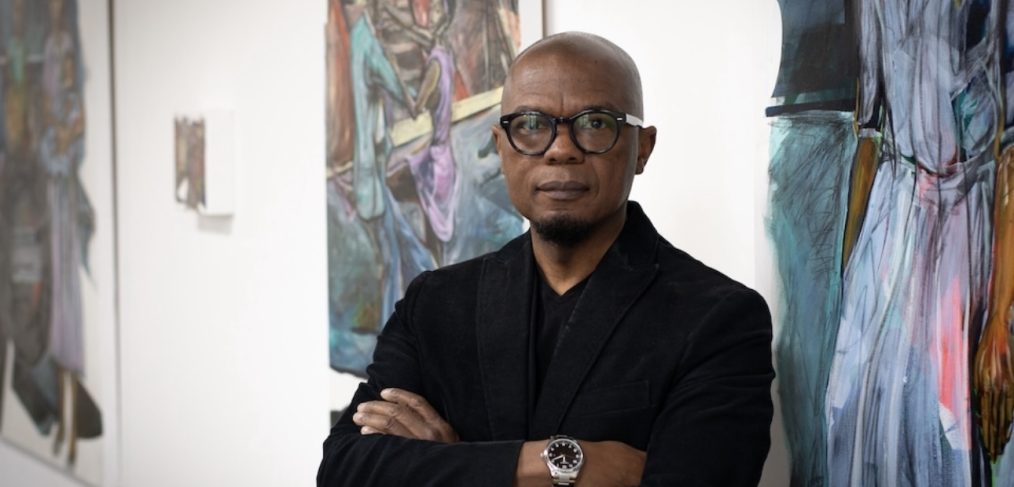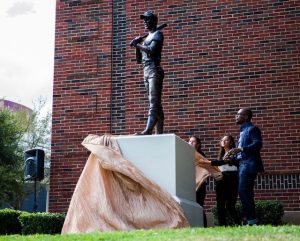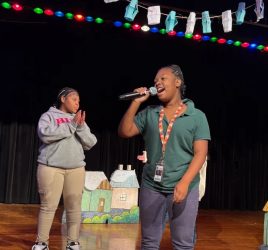
Honoring history with bronze statue
In honor of Black History Month, Dallas ISD is celebrating the achievements of team members throughout the district who are making notable contributions to the schools and the community.
Emmanuel Gillespie, a former student at Booker T. Washington High School for the Performing and Visual Arts, is leaving a lasting impact on the school as a current visual arts teacher and a professional artist.
Before he became a teacher at his former high school, he was commissioned to create a sculpture of Ernie Banks, a Booker T. Washington HSPVA alumnus and Baseball Hall of Fame legend who played for the Chicago Cubs. Gillespie crafted the bronze statue, which was unveiled in 2018, to honor the sports icon and Dallas native.
Gillespie began his artistic journey as a student at Booker T. Washington HSPVA in the 1980s. He then received a Bachelor of Fine Arts from the University of North Texas and then went on to receive a Master of Arts from Indiana University of Pennsylvania.
He is an experienced visual artist with a background in a variety of art media, including glassblowing, wood burning, printmaking, and sculpting, which he used to immortalize Banks in bronze.
“It means a lot for the city to see an African American figure in bronze,” Gillespie said.
 Located on the campus lawn, the statue symbolizes the exceptional talent nurtured at the school and the significant history within the sports community. According to Gillespie, Banks is well known in Chicago and grew up in the neighborhood that once surrounded Booker T. Washington, which he attended in the 1940s before the school became an arts magnet.
Located on the campus lawn, the statue symbolizes the exceptional talent nurtured at the school and the significant history within the sports community. According to Gillespie, Banks is well known in Chicago and grew up in the neighborhood that once surrounded Booker T. Washington, which he attended in the 1940s before the school became an arts magnet.
“I watched the homes go away and the bridge come up within those four years as a student,” Gillespie said of the changes brought about to the neighborhood with the construction of Woodall Rodgers Freeway.
For Gillespie, the statue of Ernie Banks holds significance from multiple angles—both its historical impact on the community and its educational value for the students.
“It was important, because when I was doing the project, I also had some of the students to assist in the process,” said Gillespie, who often involved local students in his community projects.
After spending two decades as a professional artist and educator, Gillespie has returned to his former high school to give back to the students and teach them traditional skill sets. Gillespie’s process for creating the statue began with clay, followed by waxing and finally using bronze, a process he now teaches his students at the arts magnet.
“One of the things I want to implement in this class course is basic clay,” he said. “We’re going to slowly enter into sculpting with the clay, and then hopefully next year, start using other materials like stone.”
Gillespie guides his students through exploring new materials and trusting their creative instincts by using a journaling method.
“I teach them techniques based on where they are and where they can go. I can see their skill sets, have a conversation and then from that I take them on a different journey or perhaps something similar,” he said.
Gillespie believes that when the students are creating their own works of art, especially ones that deal with personal historical moments, they are creating a sense of community as they engage with the world around them. His return to the campus is a testament to preserving history and a commitment to visual arts education.



